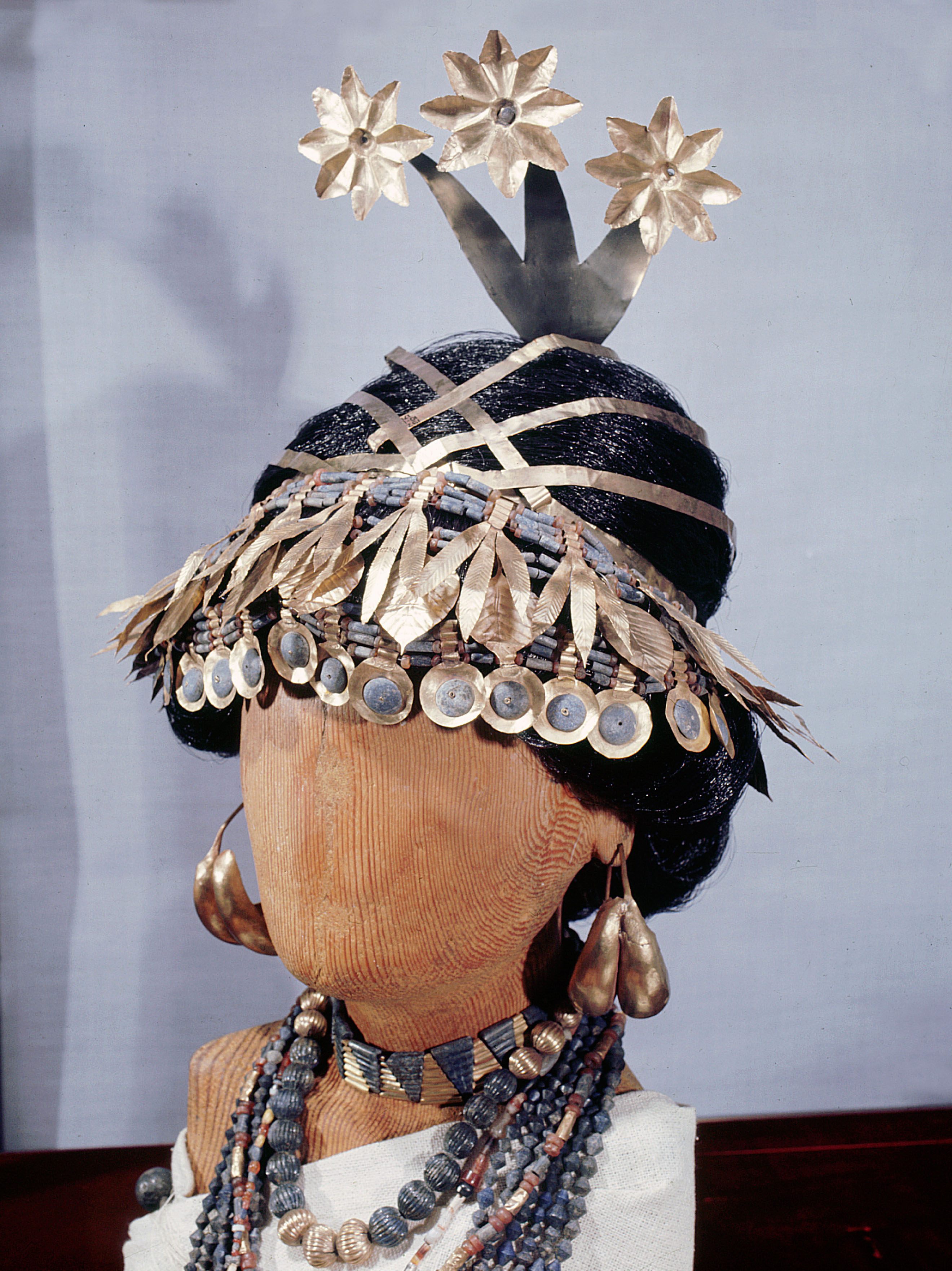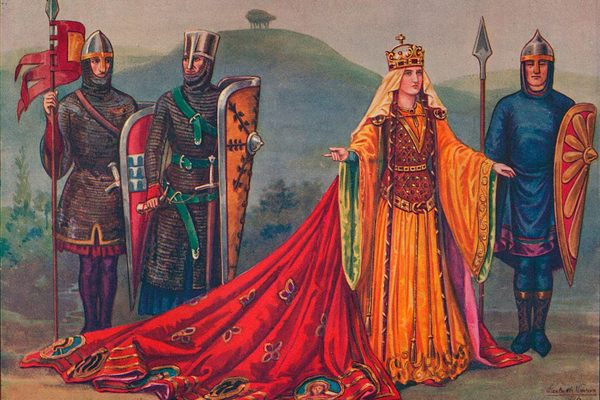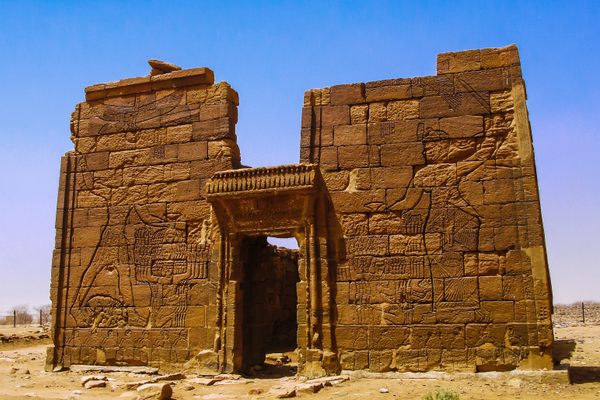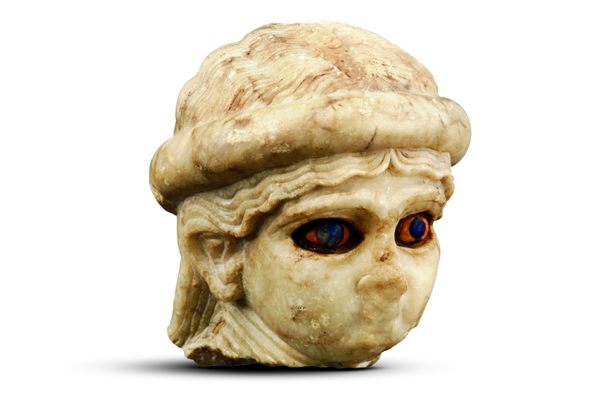
The Most Lavish Mesopotamian Tomb Ever Found Belongs to a Woman
And her clothing tells an important story, says archeologist Rita Wright.
In Atlas Obscura’s Q&A series She Was There, we talk to female scholars who are writing long-forgotten women back into history.
In the late 1920s, deep in the southern Iraqi desert, British archaeologist Leonard Woolley uncovered the most lavish Mesopotamian tomb ever discovered. The 4,500-year-old skeleton was draped in gold and precious stones. Golden rings decorated each finger, a golden-looped belt lay across the waist and a golden headdress with intricately wrought leaves and standing flowers adorned the head. Three more bodies, presumably servants, accompanied the royal skeleton. But the resplendent grave goods are not the only reason the discovery rocked the world in the early 20th century: this tomb belonged to a woman.
Queen Pu-abi, a name carried down through the millennia thanks to a lapis-lazuli seal pinned to her burial garment, lived at the height of Ur’s power around 2600 BC. In her time, the ancient city-state held extensive sway across Sumer, a region nestled between the Tigris and Euphrates. Trade in Ur flourished and trade routes extended from modern-day India to Sudan. As the main harbor for Indian goods, Ur garnered huge amounts of wealth. Though no contemporary documents mention Pu-abi, scholars believe she may have ruled in her own right since her seal mentions no husband.
Archeologist and textile expert Rita Wright, professor emerita of anthropology at New York University, is the first to ever study Pu-abi’s garments based on the only surviving image of her. Her findings have just been published in the new book Art/ifacts and ArtWorks in the Ancient World. Atlas Obscura spoke to Wright about the role of women in ancient Ur, what we know of Queen Pu-abi’s life, and why textiles are so often overlooked in archeology.

What was the role of women in ancient Ur?
There were two poles. On one pole, there were elite women. Elite women were in some way connected with rulers. They either were the sisters or other relatives of rulers or they were their wives. And these women were very important because they traveled around the country doing a variety of things as representatives of the state. And so they had a certain amount of power.
On the other pole were a group of women who worked in textile industries. One of the primary industries in southern Iraq during this period was the production of wool and linen. There were very large workshops where women were engaged in the production of woolen objects. And within that group, there were actually women who were managers.

Who was Queen Pu-abi?
I’ve mentioned elite women who traveled, but this is a person who is named. In order to identify oneself, people had seals produced with an image on them. And here is a seal with an image of what is apparently Pu-abi at a banquet. On the seal, it has her name, Pu-abi. This is very unique.
Very likely she was a person with some sort of royal lineage who was married to the king. She died sometime before 2400 to 2350 BC. Most elite women were, like Pu-abi, representatives of their husbands, and thus representatives of the state.
Kinship alliances were very important. And women served as transmitters of kinship to other people in society. They did this by traveling. They would engage in rituals. They’d go to a village, a town, or another city and they would have a banquet. And at this banquet, people would come to see the way the women looked, the kinds of clothing they wore.

What have you learned from looking at Pu-abi’s clothing?
There’ve been all these publications that talk about Pu-abi’s ornaments, but no one had ever attempted to talk about the cloth or the materials that her textiles were produced from. So we looked at her clothing on the seal. Pu-abi is sitting on a seat used by royalty. She has her hair pulled back in a sort of bun, and then she has a skirt that is fleeced at the end. She’s shown with her ornaments and her bodice. And she’s wearing a small cape. The cape goes around her shoulder, her arms, and comes down under her breast.
I imagined that that cape would be made of linen. Elite people wore woolen garments, but on particular occasions linen cloth, which was only distributed to elite people, was used. Here linen was appropriate for the ceremony but, in addition, it’s transparent and you could then see the ornaments beneath. Otherwise the ornaments would be barely visible.
So here we have a queen: the quality of her ornaments is clearly of the highest kind and her clothing is also of the highest kind.

Why do textiles often get overlooked?
When I first started looking at textiles in this period, I thought, “why is it that textiles are not up there with metallurgy?” Well, one possibility is that we know that they’re produced by women. And so women’s labor may have been less important on an economic scale.
But if I hadn’t studied Ur’s ancient women, I would have thought that the entire country was ruled by men and that all of the things that occurred in civilization, the beginning of civilization, was about what men did. And now I know that’s just one part of how civilizations develop.
This interview has been edited for length and clarity.











Follow us on Twitter to get the latest on the world's hidden wonders.
Like us on Facebook to get the latest on the world's hidden wonders.
Follow us on Twitter Like us on Facebook